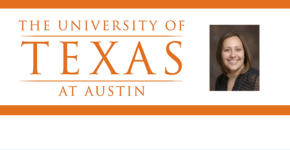 Can teens be trusted to report truthfully on a scientific study?
Can teens be trusted to report truthfully on a scientific study?
Jessica Fish, postdoctoral fellow at the University of Texas at Austin, examines whether the stigma of mischievous teens is true – or false.
Jessica Fish is a human development and family sciences scholar with interests in LGBTQ health and well-being. She joined the Population Research Center and the Department of Human Development and Family Sciences at the University of Texas at Austin as a postdoctoral research fellow in Fall 2015.
Jessica’s research focuses on LGBTQ mental health and alcohol use and how between- and within-group differences identify risk for this population. Her overall research goals are to explore mechanisms that contribute to LGBTQ health disparities and to disseminate this understanding in ways that inform programming and policy aimed at promoting the positive development, health, and well-being of LGBTQ youth and adults.
Mischievous Teens
Teens are mischievous and not to be trusted. You’ve probably heard the trope before—you may even believe it yourself; but recently adolescent researchers have started to worry that youth might be warping our trust of scientific results.
Based on this idea, a 2014 study challenged two decades of research on the health and well-being of lesbian, gay, and bisexual youth.
The data called into question—The National Longitudinal Study of Adolescent to Adult Health or Add Health—was the first US national study to include questions of same-sex attraction and, thus, launched the current body of science that documents mental health risk for gay youth.
In their controversial article, the authors argued that findings related to elevated rates of poor mental health, greater substance use, strained parental relationships, and lack of school belonging among LGB youth may, in fact, be due to some youth responding mischievously to these and other items related to same-sex attraction.
If true, these false reports would overestimate—or even invalidate—findings related to elevated risk for LGB youth.
In a new study, my co-author and I used two previously published measures of mischievous reporting that included comparing youths’ responses to those of their parents and calculating the statistical likelihood of 10 low-frequency and unlikely responses.
Like previous studies, we discovered that less than 2% of youth in the Add Health data could be classified as “mischievous”. We also found that the LGB youth were no more likely than heterosexual youth to be mischievous.
More importantly, we tested whether accounting for this mischief altered longstanding conclusions of LGB youth health and well-being. Findings indicated that even when accounting for mischief, the elevated risks for LGB youth remained.
The implications of our findings are critical. The evidence of important health disparities are real and we need continued attention from researchers, policymakers, educators, and families to inform programs, policies, and practices that promote LGB youth health.
